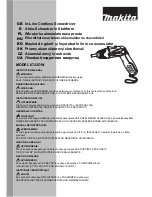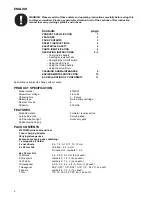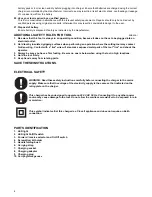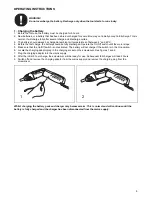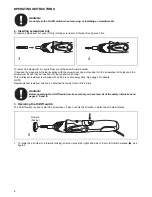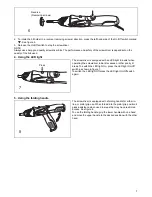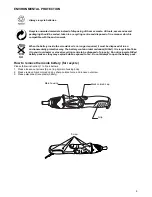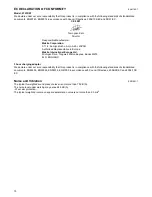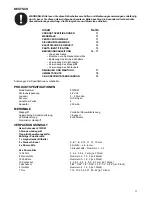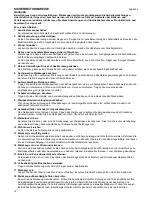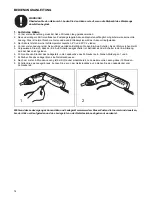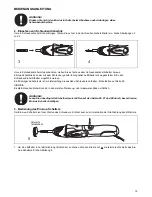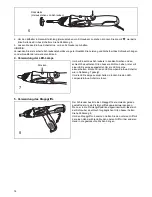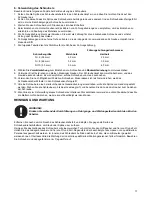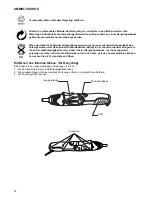
3
SAFETY INSTRUCTIONS
ENA002-2
WARNING:
When using battery operated tools basic safety precautions, including the following, should be followed to
reduce the risk of fire, leaking batteries and personal injury: Read these instructions before operating this
product and save these instructions.
For safe operation:
1. Keep work area clean.
Cluttered areas and benches invite injuries.
2. Consider the work environment.
Do not expose the tool to rain. Keep work area well lit. Do not use tools in the presence of flammable liquids or gases.
3. Keep children away.
Do not let visitors touch the tool. Keep visitors away from work area.
4. Store batteries or idle tools.
When not in use, tools and batteries should be stored separately in a dry, high or locked up place, out of reach of
children.
Ensure that battery terminals cannot be shorted by other metal parts such as screws, nails, etc.
5. Do not force the tool.
It will do the job better and safer at the rate for which it was intended.
6. Use the right tool.
Do not force small tools or attachments to do the job of a heavy duty tool. Do not use tools for purposes not intended.
7. Dress properly.
Do not wear loose clothing or jewellery, they can be caught in moving parts. Non-skid footwear is recommended when
working outdoors. Wear protecting hair covering to contain long hair.
8. Use protective equipment.
Use safety glasses and if the cutting operation is dusty, a face or dust mask.
9. Connect dust extraction equipment.
If devices are provided for the connection of dust extraction and collection ensure these are connected and properly
used.
10. Do not abuse the supply cord (if fitted).
Never carry the tool by the cord or yank it to disconnect from the socket. Keep the cord away from heat, oil and sharp
edges.
11. Secure the work.
Use clamps or a vice to hold the work. It is safer than using your hand and it frees both hands to operate the tool.
12. Do not over-reach.
Keep proper footing and balance at all times.
13. Maintain tools with care.
Keep cutting tools sharp and clean for better and safer performance. Follow instructions for lubrication and changing
accessories. Inspect tool cords periodically and if damaged have repaired by an authorized service facility.
14. Disconnect tools.
Where the design permits, disconnect the tool from its battery pack when not in use, before servicing and when
changing accessories such as blades, bits and cutters.
15. Remove adjusting keys and wrenches.
Form the habit of checking to see that keys and adjusting wrenches are removed from the tool before turning it on.
16. Avoid unintentional starting.
Do not carry the tool with a finger on the switch.
17. Stay alert.
Watch what you are doing. Use common sense. Do not operate the tool when you are tired.
18. Check damaged parts.
Before further use of the tool, a guard or other part that is damaged should be carefully checked to determine that it
will operate properly and perform its intended function. Check for alignment of moving parts, free running of moving
parts, breakage of parts, mounting and any other condition that may affect its operation. A guard or other part that is
damaged should be properly repaired or replaced by an authorized service facility unless otherwise indicated in this
instruction manual. Have defective switches replaced by an authorized service facility. Do not use the tool if the switch
does not turn it on and off.
19. Warning.
The use of any accessory or attachment, other than recommended in this instruction manual or the catalog, may
present a risk of personal injury. Ensure that the battery pack is correct for the tool. Ensure that the outside surface of

